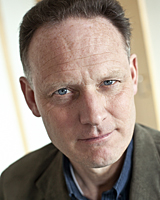This is what winter vomiting disease and video games have in common
The European Research Council's call, the ERC Advanced Grant is aimed at established world class researchers. Göran Stemme, KTH professor who specialises in microsystems, is the type of scientist it is aimed at. He has now received SEK 23 million to conduct research which may result in new medical technologies.

Micro-electromechanical systems (MEMS) and heterogeneous integration. These are words that some people may have difficulty in pronouncing.
But they are also the fields where KTH Professor Göran Stemme operates.
He and his research colleagues at the School of Electrical Engineering at KTH have now received a significant amount of money to conduct further research on how the manufacture of these systems can be made cheaper, and how new materials and structures can be combined to result in new components with new and improved properties. Examples of such components are new sensors, pumps, valves, reaction chambers and photonics and microwave components that can be used for example within medical technology.
"Through various etching and jointing techniques we create three-dimensional structures that are of micro and nanometre dimensions, such as thin membranes for pressure sensors or small fluid channels for biosensors," says Göran Stemme.
The research grant, which is to last over the next five years, will be used to create cheaper production methods and components with new functions which will provide us with the ability to measure new things. For example, the concentration of a substance, possibly a virus in the air or in a liquid.
As regards more cost-efficient production methods it is important that it generates an opportunity for applications with a lower manufacturing cost threshold. You do not need such large production volumes for microelectronics, it is sufficient with a volume of 100,000 components of the same type to provide profitability.
As regards high-volume components, Göran Stemme says that today, they are everywhere. Probably in your pocket as you read this.
"Probably the most well-known are the sensors in mobile phones or TV games. The first involves the accelerometer, but they are also found in gyroscopes and electronic compasses," says Göran Stemme.
He is also happy that he and his research team have received funding from the ERC.
"What's especially gratifying about the grant is that we have been given the opportunity to conduct research in a more general fashion. Before we had to conduct more applied research, now it's research of a more basic character in which we can later move on to more direct applications. It is also a recognition of everything we've done so far," says Göran Stemme.
For more information, contact Göran Stemme on 08 - 790 77 87 or stemme@s3.kth.se.
Göran Stemme

